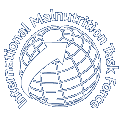What is RUTF?
Ready-to-use therapeutic food (Plumpy’nut) was invented in the late 1990s by research scientist André Briend and Nutriset, a private company making nutritional products for humanitarian relief. RUTF is high in energy and protein, with added electrolytes, mineral and vitamins, specifically designed to treat SAM in the rehabilitation phase. It is equivalent to F100 in terms of nutrients/100kcal. It does not have to be mixed with water and so is microbiologically safe and enables treatment in the community.
What is the advantage of using RUTF?
RUTF has significant advantages over liquid based diets. The paste is oil-based with low water activity and, as such, can be stored at home with little risk of microbial contamination. It is easily used at home by mothers and caregivers, and is digestible and popular among sick and malnourished children and adults. RUTF is effective in promoting rapid weight gain in malnourished children.
Adapted from “Community Therapeutic Care (CTC): A new approach to managing acute malnutrition in emergencies and beyond” by Caroline Grobler-Tanner and Steve Collins, FANTA, 2004
What is the composition of RUTF?
The most widely used at present is Plumpy’nut. The ingredients are peanut paste, milk powder, vegetable oil, sugar, potassium, magnesium, vitamins, and minerals. Each 92g pack provides 500 kcal.
Adapted from “Community Therapeutic Care (CTC): A new approach to managing acute malnutrition in emergencies and beyond” by Caroline Grobler-Tanner and Steve Collins, FANTA, 2004
Can RUTF be produced locally?
The high cost of the imported RUTF is a significant barrier to the wide-scale implementation of CTC. To overcome this barrier, the CTC program currently promotes local production of RUTF.
Local production of RUTF has been successful in Malawi. The cost of the local version is about half that of the imported version. The locally produced RUTF follows the same recipe as original Plumpynut and is packed in 250g plastic jars with a shelf life of up to six months. Comparison efficacy studies demonstrate that the locally produced RUTF is nutritionally equivalent to the imported version.
Adapted from “Community Therapeutic Care (CTC): A new approach to managing acute malnutrition in emergencies and beyond” by Caroline Grobler-Tanner and Steve Collins, FANTA, 2004
What makes RUTF different from family foods and other feeds fed to severely malnourished children?
- RUTFs do not need cooking and do not need to be mixed with water.
- The high fat content and low moisture prevents bacterial growth, which means that they are microbiologically safer than feeds prepared with water. RUTF will keep for several months in simple packaging.
- Electrolytes and micronutrients are added during production, whereas these need to be provided as supplements when using family foods.
- RUTFs are usually more expensive than high-energy mixtures of family foods.
Adapted from “Community Therapeutic Care (CTC): A new approach to managing acute malnutrition in emergencies and beyond” by Caroline Grobler-Tanner and Steve Collins, FANTA, 2004
